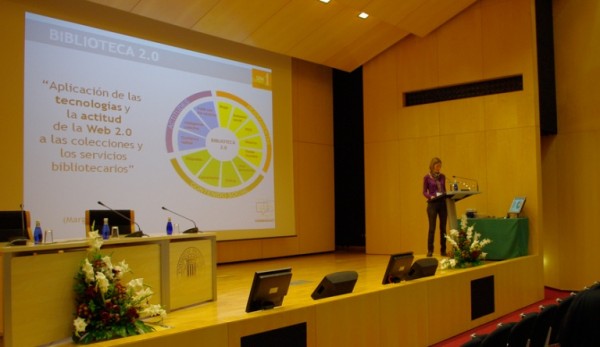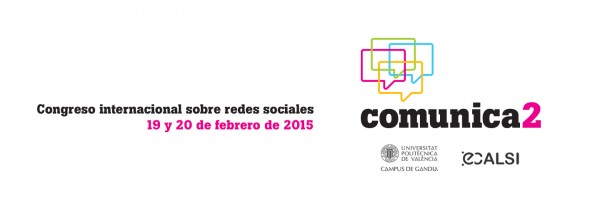The academic conference on social media and digital communication will celebrate its fifth edition at Campus Gandia. On February 19 and 20, the Campus will be host to leading specialists in the fields of communication, arts, education, radio, cinema, culture, sociology, tourism and marketing with one thing in common: new media.
The 2015 edition of Comunica2 comes with a loaded agenda of conferences, roundtables, workshops (look out for to the scientific dissemination workshop: “Dissemination and Personal Branding for Researchers in the 2.0 Age”) and, of course, the presentations of the scholarly papers selected by the academic committee of the conference.A record was beaten this year with 30 proposals received in the Call for Papers. Ultimately, thirteen papers were selected to be presented by their authors on Friday, February 20th at 08:30 am:
- Scholarly Papers 2015: Total accepted – 13
- Scholarly Papers 2014: Total accepted – 8
- Scholarly Papers 2013: Total accepted – 18
- Scholarly Papers 2011: Total accepted – 11
- Scholarly Papers 2010: Total accepted – 8
Natalia Sastre, who is in charge of the academic side of the conference, reveals how things run behind the scenes of one of the most important aspects of Comunica2:
1. How does the academic part of the conference function and what is the role of the committee?
A few months prior to the conference, we announce a Call For Papers and publish the information regarding submission of abstracts or papers, including deadlines, topics, formalities, selection process, committee, etc.
Once the papers have been submitted, the evaluation process starts to determine the academic paper’s suitability for the conference, or peer review with the double-blind system. Each proposal is sent to two members of the committee that review them separately without prior knowledge of the author or authors of the proposal, or of the other reviewer.
In this edition (2015), 21 qualified members of professions within the relevant field of the Conference were chosen as referees on the academic committee. Some of them have been permanent members throughout several editions, but other reviewers change every year depending on their availability.
This year the conference proceedings will be published electronically by the UPV Publishing.
2. What criteria are taken into account when reviewing a paper proposal?
Although the Conference itself recommends certain criteria, such as originality, academic contribution, relation to the theme of the conference, clear objectives and methodology, the reviewers themselves, as specialists in the field, may also suggest further criteria for consideration. In the end, the reviewer accepts or rejects the proposal as a whole.
3. What is the hardest part of the process?
The truth is that the process isn’t terribly complicated since both authors and reviewers know the submission period well in advance. However, most papers are submitted at the last minute, so both sides are to racing to the finish. Personally, the part I like least is having to tell the authors that have submitted late, that unfortunately, their proposal cannot be reviewed; deadlines are “sacred”.
4. How has the academic part of the Conference evolved over these five editions?
On the whole it’s been quite positive because we receive more and more proposals each years (this year we had almost 30) and more professional in nature, the result also of developments in research on the subject of social networks. The industry has consolidated and this can be seen in the number of studies, theses, articles and applications that have been produced and presented at the Conference.
We have also noticed that many researchers await the arrival of Comunica2 to present the results of their investigations. Somehow, the Conference at Campus Gandia has established a firm foothold as a spearhead in research on new media on a national level, a role that pleases us and which we take on with tremendous responsibility.



